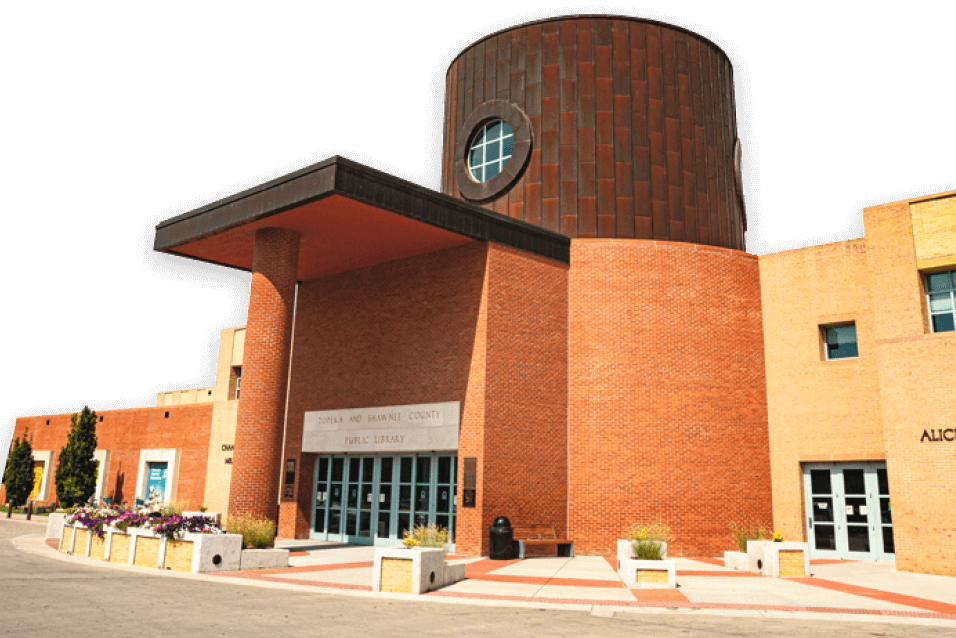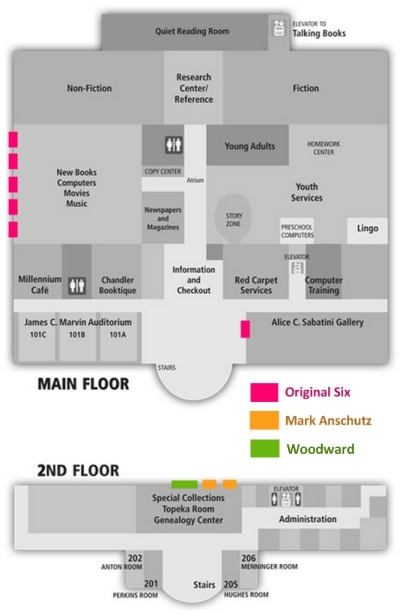52 for 150: What's So Special About Your Library's Stained Glass Windows?
 For week 30 of our Kansas sesquicentennial video series we're taking a closer look at the Library's various stained glass windows. Six are from the original 1883 Library located on the Statehouse grounds, two were commissioned from artist Mark Anschutz for the Library’s grand re-opening for the Topeka Room and a triptych from the Woodward family home, originally in Lawrence until Chester Woodward relocated his family to Topeka around 1920 (now the Woodward Inns on Fillmore).
For week 30 of our Kansas sesquicentennial video series we're taking a closer look at the Library's various stained glass windows. Six are from the original 1883 Library located on the Statehouse grounds, two were commissioned from artist Mark Anschutz for the Library’s grand re-opening for the Topeka Room and a triptych from the Woodward family home, originally in Lawrence until Chester Woodward relocated his family to Topeka around 1920 (now the Woodward Inns on Fillmore)."Based on remains found at Pompeii and Heraculaneum, stained glass was first used by wealthy Romans in their villas and palaces in the first century A.D. At this time stained glass was considered a domestic luxury rather than an artistic medium. It began to be regarded as an art form when Constantine first permitted Christians to worship openly in 313 A.D., as they began to build churches based on Byzantine models. The earliest surviving example of pictorial stained glass is a head of Christ from the tenth century excavated from Lorsch Abbey in Germany."
http://www.youtube.com/watch?v=GNKmMxjqvrsAbout 52 for 150
Every object has a story, and stories build history. To celebrate 150 years of Kansas statehood we're featuring 52 objects (or collections of related objects)—something new each week throughout the year—from the Topeka & Shawnee County Public Library's 130-year-old special, and permanent collections, that represent our collective state history and cultural diversity.
Our collections are available for teachers, students, researchers and general interest, and we hope this online video program will provide insight into what's so "special" about Special Collections. Your library's commitment to collecting art and preserving local history makes it possible for users today and in the future to have immediate access to invaluable research material and cultural artifacts.
Our stained glass windows are on permanent display. See map below for locations. For help finding books and videos related to this topic, call or stop by the Sabatini Gallery (785-580-4515). We're located on your right just beyond the Library rotunda entrance.
http://www4.uwm.edu/letsci/arthistory/StainedGlass/history.cfm













